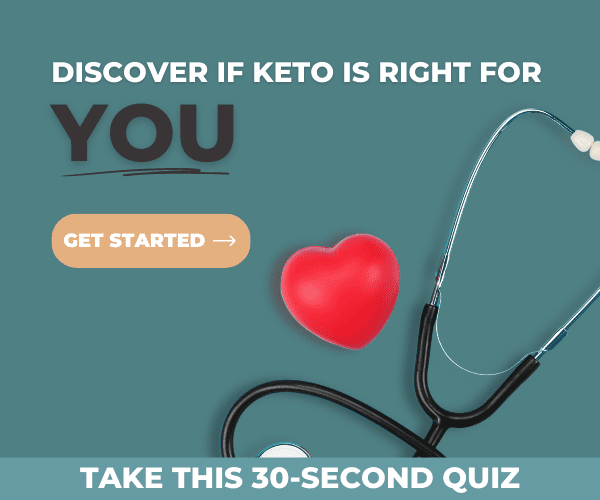
Excess fat in the liver becomes a health problem. As the second-largest organ in your body, your liver processes nutrients, filters harmful substances from your bloodstream, and more. Many people are afflicted with fatty liver disease. What exactly is fatty liver disease? What symptoms should you look out for?
Different Types of Fatty Liver Disease
Inflammation is a key driver of disease, and excess fat in the liver causes liver inflammation. Over time, inflammation of the liver can damage functioning and create scarring that could lead to liver failure [1].
Alcoholic Fatty Liver Disease (AFLD)
You might be more familiar with alcoholic fatty liver disease (AFLD) that develops in someone who drinks lots of alcohol. Without any inflammation or other complications, the earliest stage of alcoholic-related fatty liver disease is called simple alcoholic fatty liver. Over time, when excess fat in the liver occurs alongside inflammation, it’s known as alcoholic steatohepatitis (ASH). Untreated ASH can cause liver fibrosis and liver failure.
Nonalcoholic Fatty Liver Disease (NAFLD)
Nonalcoholic fatty liver disease (NAFLD) occurs in someone who doesn’t drink a lot of alcohol and affects an estimated 25 to 30% of people in Europe and the United States [2].
If you don’t have a history of heavy alcohol use but you have excess fat in your liver, you might be diagnosed with NAFLD. If the fat accumulation is accompanied by inflammation, your doctor might diagnose nonalcoholic steatohepatitis (NASH), which is a type of NAFLD.
Acute Fatty Liver of Pregnancy (AFLP)
Acute fatty liver of pregnancy (AFLP) is exactly as it sounds and involves extra fat in the liver during pregnancy. AFLP is an uncommon but serious pregnancy complication, and the cause is unknown. A genetic component could be involved with AFLP.
AFLP typically happens in the third trimester of pregnancy but returns to normal within a few weeks after the birth.
What are the Symptoms of Fatty Liver?
Both NAFLD and AFLD involve similar symptoms. You might feel a little tired or have some pain or discomfort in the upper right area of your abdomen. In many cases, fatty liver doesn’t cause any symptoms.
Fatty liver is typically described in four stages:
- Simple fatty liver — the first stage of a buildup of excess fat in the liver
- Steatohepatitis — inflammation and extra fat in the liver
- Fibrosis — consistent inflammation of the liver that’s caused scarring (liver can still function normally)
- Cirrhosis — Widespread scarring of the liver impairing liver functioning (cirrhosis is the most severe and irreversible stage of fatty liver disease)
Complications of fatty liver disease include scarring known as live fibrosis. Severe liver fibrosis is called cirrhosis and can be life-threatening and lead to liver failure. Liver damage from cirrhosis is usually permanent, so it’s crucial you take care of your liver and try to prevent cirrhosis from happening.
Cirrhosis might lead to symptoms like:
- Loss of appetite
- Weight loss
- Fatigue and weakness
- Abdominal pain
- Itchy skin
- Nausea
- Easy bleeding or bruising
- Yellow eyes and skin
- Dark-colored urine
- Swelling (edema) of the legs
What Causes Fatty Liver Disease?
Drinking too much alcohol changes specific metabolic processes in the liver and causes AFLD. Most keto dieters don’t drink too much alcohol because it kicks you out of ketosis, and most alcoholic beverages aren’t keto-friendly.
It isn’t exactly clear what causes non-alcoholic fatty liver disease. People who don’t drink a lot of alcohol might have issues metabolizing fat, or their bodies might be producing too much fat.

Various factors could contribute to the accumulation of excess fat in the liver cells, such as:
- Insulin resistance
- Obesity
- Type 2 diabetes
- Metabolic syndrome
- High triglycerides in the blood
- Side effects of some medications, such as methotrexate
- Some infections like hepatitis C
- Certain rare genetic conditions like Wilson’s disease
- Exposure to certain toxins
- Polycystic ovarian syndrome
- Rapid weight loss
Smoking and having a history of infections like hepatitis C might increase your risk of developing NAFLD. An increased risk doesn’t necessarily mean you’ll get fatty liver disease; it’s just something to be aware of.
Can a Keto Diet Improve Fatty Liver Disease?
When it comes to diet, most health professionals and advocates agree a balanced and nutrient-dense diet is optimal for fatty liver disease. Many emphasize lowering refined carbohydrates, which is a given on a ketogenic diet. Going keto has also been proven to improve blood sugar and cholesterol, which is also beneficial for those with fatty liver disease.
It might be helpful to drink plenty of water and lower or avoid consumption of trans fats, artificial processed foods, and raw or undercooked shellfish.
Living a healthier lifestyle can improve or prevent fatty liver disease, including:
- Limiting or avoiding alcohol
- Taking steps to safely lose weight or maintain a healthy weight
- A nutrient-dense diet
- Avoiding supplements or medications that can be hard on the liver
- Regular exercise
Some doctors recommend detoxification and liver support. Recent research suggests vitamin E supplements could help lower inflammation and excess fat in NAFLD [3].
It’s always best to discuss your questions and concerns with your doctor or healthcare practitioner before starting a new supplement, diet, or natural remedy.
It’s possible to reverse damage caused by fatty liver disease when it’s treated in the early stages. Be mindful of the symptoms and take care of your liver with a healthy lifestyle!
References
John Hopkins Medicine. Nonalcoholic Fatty Liver Disease. Nonalcoholic Fatty Liver Disease | Johns Hopkins Medicine
Lonardo, A., Nascimbeni, F., Maurantonio, M., Marrazzo, A., Rinaldi, L., & Adinolfi, E. (2017). Nonalcoholic fatty liver disease: Evolving paradigms. World J Gastroenterol, 23(36), 6571-6592. DOI: 10.3748/wjg.v23.i36.6571
Usman, M., & Bakhtawar, N. (2020). Vitamin E as an adjuvant treatment for non-alcoholic fatty liver disease in adults: A systematic review of randomized controlled trials. Cureus, 12(7), e9018. DOI: 10.7759/cureus.9018









